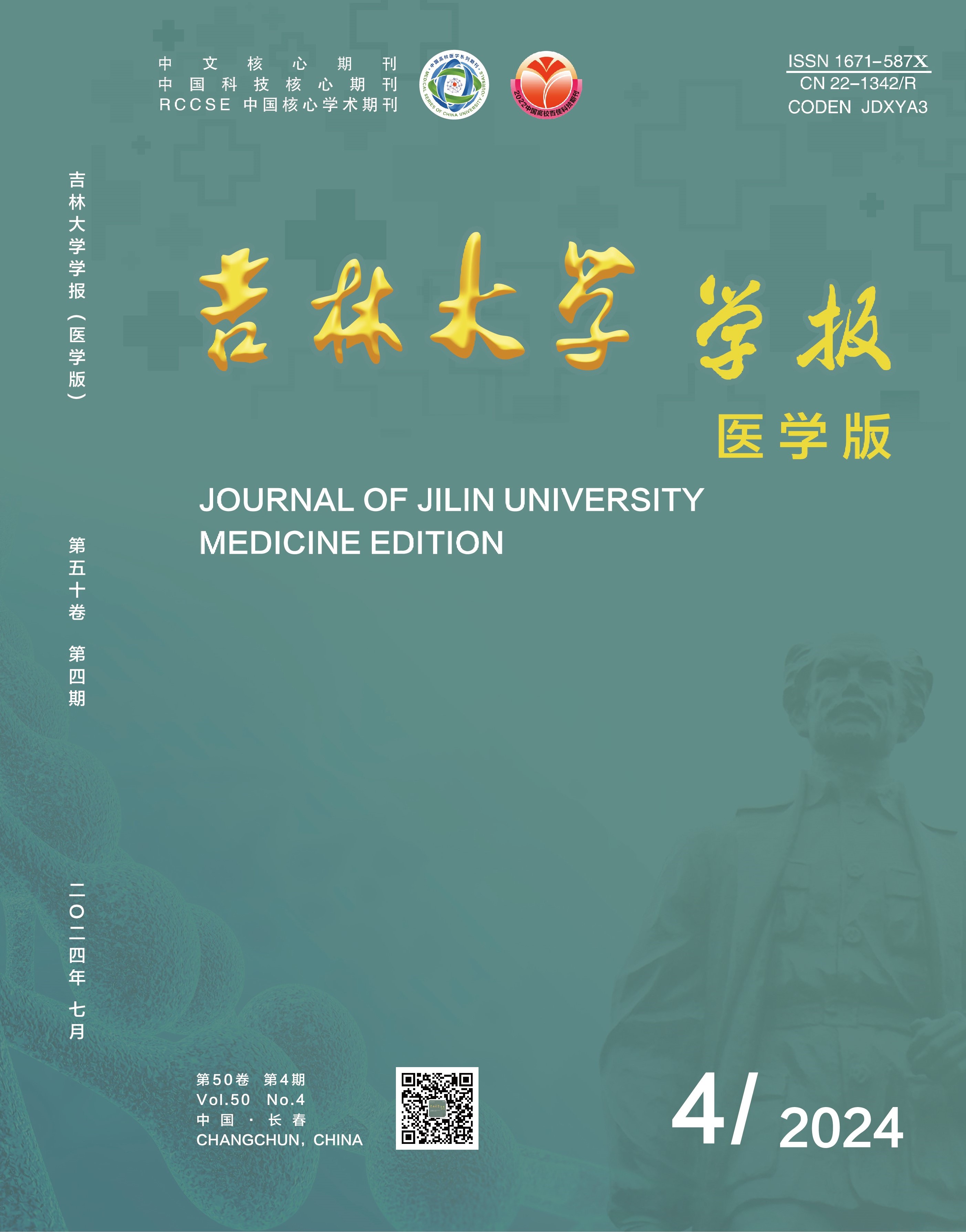|
|
Inhibitory effect of astragalus polysaccharides on pulmonary inflammation in asthma model mice and its mechanism
WANG Lihong, ZHANG Ying, LAN Kun, ZHANG Haiyu, CAO Xiaobei, LI Shanyu
Journal of Jilin University(Medicine Edition). 2019, 45 (02):
313-318.
DOI: 10.13481/j.1671-587x.20190217
Objective: To investigate the inhibitory effects of astragalus polysaccharides(APS) with different molecular weights on the pulmonary inflammation in the asthmatic mice, and to elucidate their mechanisms.Methods: A total of 30 female BALB/c mice were selected. They were randomly divided into normal control group, asthma model group (model group),low molecular weight APS (APS-low) group,midde molecular wieght APS(APS-middle) and high molecular weight APS(APS-high) group,with 6 mice in each group. The mouse models of asthma in model group and APS groups were established by injecting and inhaling ovalbumin (OVA). The mice in APS-low,APS-middle and APS- high groups were separately given 0.1 mL of 4 500, 15 000, 30 000 molecular weight APS for intraperitoneal injection before inhaled OVA. The mice in normal control group were treated with the same amount of normal saline instead of OVA injected and inhalled. The behavioral changes of the mice were observed during the atomization with OVA, and the total number of WBC and the counts of inflammatory cells in the bronchoalveolar lavage fluid(BALF) were observed with light microscope;the pathological changes of lung tissue was observed by HE staining. Cytometric Bead Array (CBA) method was used to detect the levels of IL-4 and IFN -γ in the serum as well as BALF. The spleen CD4+ T cells were extracted and cultured, and the ratios of Th1,Th2,Th17 and Treg cells were detected by flow cytometry. CBA method was used to detect the levels of IL-4, IFN-γ, IL-17, and IL-10 in the culture supernatant.Results: Compared with normal control group, the mice in model group showed asthma-like symptoms such as sneezing, snouting nose and shortness of breath, inflammatory infiltration of lung tissue, airway mucosal edema, smooth muscle thickening;the IL-4 levels in serum and BALF were increased (P<0.05), and the IFN-γ levels in serum and BALF were significantly decreased (P<0.05);IL-4 and IL-17 levels in cell culture supernatant were significantly increased (P<0.05),and the IFN-γ and IL-10 levels were significantly decreased (P<0.05);the ratios of Th2 and Th17 cells were significantly increased (P<0.05), and the ratios of Th1 and Treg cells were significantly decreased (P<0.05). Compared with model group, the asthmatic symptoms of the mice in APS groups, for example, scratching nose and mouth, shortness of breath, and irritability, were relieved to varying degrees; the inflammatory cell infiltration and wall thickening were significantly improved;the levels of IL-4 in serum and BALF were significantly reduced(P<0.05), and the IFN -γ levels were increased (P<0.05);the levels of IL-4 and IL-17 in the culture supernatant were significantly reduced(P<0.05) and the levels of IFN-γ and IL-10 were increased (P<0.05);the ratios of Th2 and Th17 cells were significantly decreased (P<0.05),and the ratios of Th1 and Treg cells were increased (P<0.05). Compared between three APS groups, the asthmatic symptoms and lung tissue inflammatory infiltration were lightened obviously in APS-low group, the IL-4 levels and the ratios of Th2 and Th17 cells in serum and BALF were significantly decreased (P<0.05),and the IFN-γ levels in serum and BALF and the ratios of Th2 and Th17 cells were significantly increased (P<0.05).Conclusion: APS can significantly improve the situation of airway inflammation infiltration and the symptoms of the asthmatic mice. APS plays a therapeutic role for asthma by regulating the Th1/Th2 and Th17/Treg cell balance, decreasing the levels of IL-4 and IL-17 and increasing the levels of IFN -γ and IL-10 level;the low molecular weight APS shows an obvious effect.
References |
Related Articles |
Metrics
|

 Table of Content
Table of Content
 Guide to Authors
Guide to Authors


